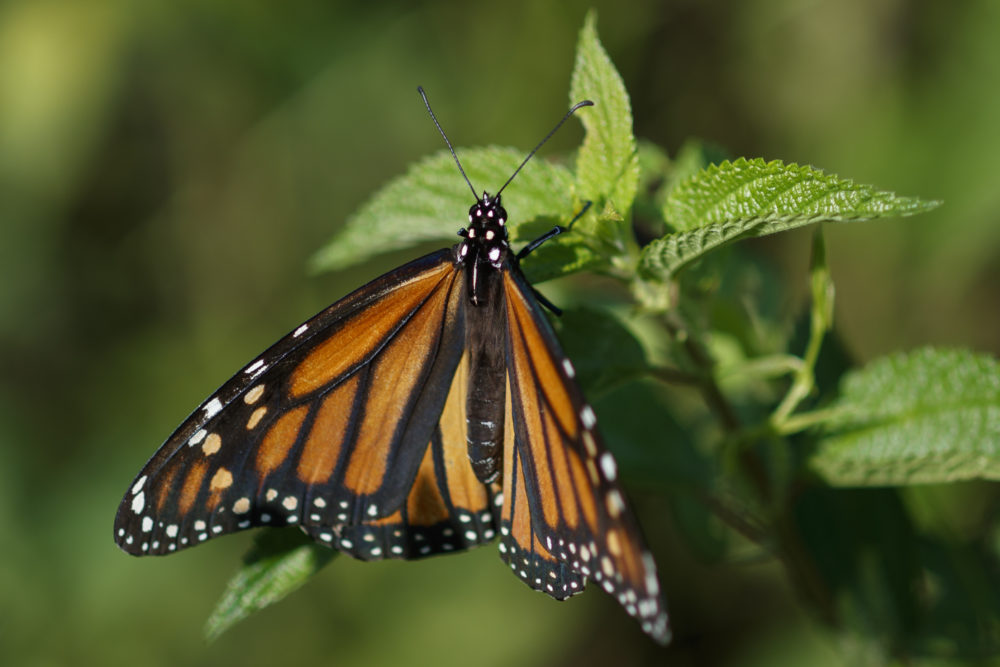Advertisement
Commentary
What’s The Cost Of Destroying A Species?

Not too long ago, from an eighth-floor window of a Cambridge office building, I watched a peregrine falcon strike a pigeon in midair, killing it in an astonishing display of speed and power.
I could not have witnessed the scene in my youth because the peregrine falcon was then on the cusp of extinction in the eastern United States. It began a slow recovery in 1972 when the pesticide DDT was banned and the bird was protected under the Endangered Species Act of 1973 — the same law that the Trump administration took steps to undermine earlier this week.
Congress passed that landmark legislation during a period of burgeoning environmental and ecological awareness. The aftershocks of Rachel Carson’s “Silent Spring” were still reverberating in classrooms and boardrooms across the nation. The first Earth Day was observed in April of 1970, and Nixon signed off on the formation of the Environmental Protection Agency in December that year.
Almost five decades later, the Endangered Species Act has compiled an impressive record of success. Included among the animals supported by its safety net of legal protections are the grey wolf, the grizzly bear, the California condor and the polar bear. In the final days of the Obama administration, the rusty patched bumblebee — a crucial pollinator and native to Massachusetts — was listed as endangered.

In the estimate of one historian, the Endangered Species Act is “the Magna Carta of the environmental movement.” Any weakening of the law must be viewed with concern.
Technically, the administration has not changed the law — that would require action by Congress — but it has altered the regulations that implement the law. The carefully-worded 140-page document released by the Department of the Interior grants administrators significantly more leeway in the determination of when a species must be listed as threatened, the status one step below endangered. More troubling, the new regulation on how classifications are made deletes from the current rule the clause “without reference to possible economic or other impacts of such determination.”
This second change, despite official claims to the contrary, could crack open the door to allowing economic cost-benefit analyses to influence which species get protection — a disturbingly problematic prospect. While it’s possible to estimate the economic benefit of a new mine or dam or highway, how do you assign a cost to the destruction of a species? Who can know with any certainty how important a role that species may play in its ecosystem? And moreover, on what moral basis could a bureaucrat decide that some habitat-ravaging boondoggle is worth the annihilation of a unique form of life that evolved over eons?
... on what moral basis could a bureaucrat decide that some habitat-ravaging boondoggle is worth the annihilation of a unique form of life that evolved over eons?
But sadly, there’s no doubt that the changes are intended as a first step in the dismantling of the nation’s strong conservation law. The changes have been in the works for over a year, proffered under the guise of “an update” for greater transparency. We are squarely at the intersection of Trump’s energy dominance agenda and the “deconstruction of the administrative state.”
The press release from Interior makes this quite explicit — it says the changes to the law are consistent with the goal of “easing the regulatory burden on the American public.”
Yes, there are indeed Americans who are clamoring for less regulation. They’re people in ranching, mining, oil and gas who would love to see the Endangered Species Act eviscerated. David Bernhardt, the secretary of the Interior, no doubt knows them quite well, having been a lobbyist for the oil industry before his current job. (And, perhaps not surprisingly, this is the same Department of the Interior that recently erected a major roadblock to Massachusetts’ critically important offshore wind development plans.)
At a time when global biodiversity is already collapsing under pressures from pollution, habitat loss and climate change, the weakening of the Endangered Species Act is one more blow. Massachusetts Attorney General Maura Healey, along with AGs from other states, say they’ll sue, but sometimes it feels like the forces of good are outnumbered.
And the peregrine falcon I watched that day in Cambridge — would the planet really be diminished had its kind not been saved? The revered conservationist Aldo Leopold put it eloquently: “The last word in ignorance is the man who says of an animal or plant, ‘What good is it?’ If the land mechanism as a whole is good, then every part is good, whether we understand it or not.”
